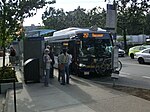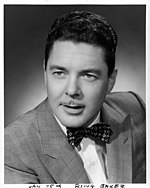Sentinel Secondary School

Sentinel Secondary School is a secondary school located in West Vancouver, British Columbia, Canada. It is one of three public secondary schools in the West Vancouver district (SD #45) including West Vancouver Secondary School and Rockridge Secondary School. The school has a grass field, two baseball diamonds, three street hockey courts, and three tennis courts. The main field is used for all sports, such as soccer, football, and rugby. The school was established for the 1962–63 school year with students who had previously attended Hillside Secondary School and Inglewood Junior High School. The first classes were held in the old Inglewood School until the new building was completed in 1963. The first grade 12 graduating class was in 1965.
Excerpt from the Wikipedia article Sentinel Secondary School (License: CC BY-SA 3.0, Authors, Images).Sentinel Secondary School
Tyrol Road, West Vancouver British Properties
Geographical coordinates (GPS) Address Nearby Places Show on map
Geographical coordinates (GPS)
| Latitude | Longitude |
|---|---|
| N 49.34563 ° | E -123.15046 ° |
Address
Sentinel Secondary School
Tyrol Road
V7S 2S5 West Vancouver, British Properties
British Columbia, Canada
Open on Google Maps






